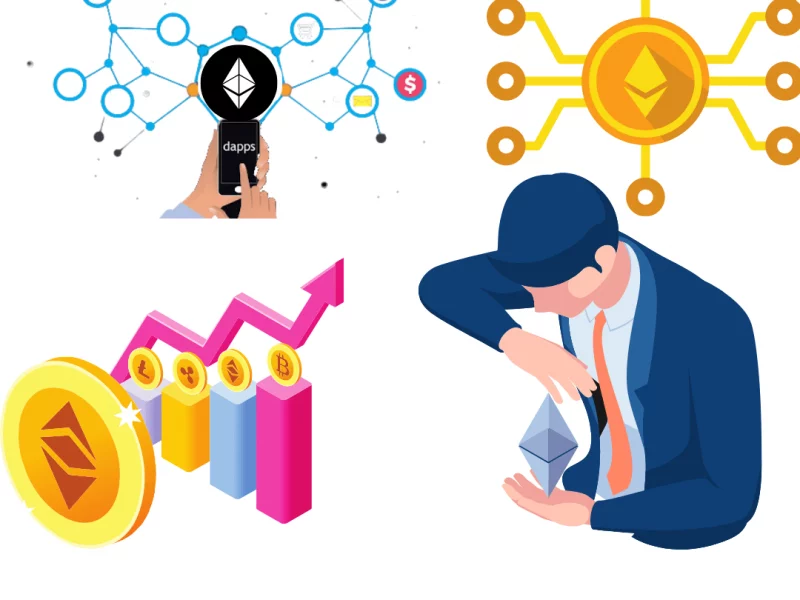Mining is the process of adding transaction records to the blockchain, the public ledger utilized by Bitcoin (BTC), in today’s emerging crypto world. So BTC mining is an integral part of the Bitcoin network, solving the double-spend problem for beginners in the crypto world.

However, as a beginner, it can be challenging to understand how this mining process works and how you can do it too. To help you with that, our detailed guide will list all the basics of what is bitcoin mining and important tips to help you better understand how you can also mine bitcoin. So without further ado, let’s dive into the details.
What is Bitcoin Mining?
Over the years, bitcoin has been mined on various devices since its introduction in 2008. This cryptocurrency is mined on multiple devices, ranging from modest personal computers to large specialist rigs.
Mining bitcoin is important because of the competition to add new blocks and specialized hardware (e.g., application specific integrated circuits, or ASICs) that can mine much quicker and more efficiently than general-purpose devices have been developed. Most mining now occurs in huge “pools,” where numerous miners collaborate to maximize their chances of obtaining rewards.
To be more precise, verifying and adding transaction entries to the public ledger is called bitcoin mining. The bitcoin network relies on miners to verify and validate transactions to ensure the system’s security and trustworthiness. Later, miners are compensated for their efforts in maintaining the network by receiving newly produced bitcoins (or fractions thereof) and transaction fees.
Furthermore, as more individuals learn about and use bitcoin, the demand for transaction verification will rise. So when miners are rewarded for their efforts with newly produced bitcoins and transaction fees, the price may rise.
Now when you opt for mining bitcoin, it’s essential to know that it is a time-consuming and resource-intensive operation that requires a substantial amount of computational power.
As a result, it has become more specialized, and large-scale mining enterprises have sprung up to capitalize on economies of scale. These activities frequently employ specialized hardware (e.g., ASICs) and consume a large amount of electricity, which can be costly.
4 Bitcoin Mining Tips You Should Know Before You Start
1. Who is Eligible for Mining?
Since the BTC mining process adds transaction records to the blockchain and releases fresh bitcoins into circulation, it can be complex. Hence, participants can use significant computational resources to solve complex mathematical problems to be eligible for mining prizes (i.e., proof of work). The complexity of these challenges is dynamically changed so that a new block is added to the blockchain every 10 minutes on average.
2. Bitcoin Mining: Choosing the Right Method?
Bitcoin can be mined in two ways:
- With hardware
- With cloud mining service.
Mining with Personal Hardware
ASICs and GPUs are the two primary types of mining hardware that you can choose from. They are extremely powerful and efficient but come at a high cost. GPUs (Graphics Processing Units) are commonly used for gaming and graphic creation but may also be used to mine Bitcoin.
If you want to mine Bitcoin with your gear, you must first check that you have the proper equipment. Once you have the proper hardware/equipment, you must download and install software to connect to a mining pool to start mining.
Mining with Cloud Mining Service
Cloud mining services can be less expensive because you rent other people’s hardware for a piece of the Bitcoin mined. But you should be aware of the risks of cloud mining before you begin.
One of the biggest risks for cloud mining is that the service you rent can cease to exist or can even go bankrupt. Another possibility is that the service will only pay you part of the amount of Bitcoin you have mined. This could occur if the price of Bitcoin declines or if the service has sufficient funds to pay its subscribers.
Making a Decision: Which One is Better?
Now, personal hardware can be costly and is not necessarily strong enough to mine Bitcoin profitably. On the other hand, cloud mining services allow you to rent other people’s hardware in exchange for a piece of the mined Bitcoin. This is a less expensive method, but you should know the many risks of cloud mining before starting.
So before you start mining bitcoin, research and understand the risks and potential rewards involved in both mining approaches. Once you know what you’re signing for, decide based on how much you’re willing to lose and how much you hope to make.
3. Best Bitcoin Mining Software
Once you have understood the risks and benefits of bitcoin mining and decided to proceed, it’s time to set up your mining device for the work.
Specifically, you need to set up a digital wallet and get its address after choosing a type of hardware. Afterward, it’s time to download software and start mining. Now choosing the right software is also crucial. To help you with that, we have listed three ideal software you can choose before mining bitcoin. This software includes:
- BTCMiner
With over 370,000 members mining Bitcoin using the newest algorithm, this is one of the greatest Cloudbase mining pools. BTCMiner eliminates the need for sophisticated mining equipment, lowering setup costs while increasing mining power.
- EasyMiner
EasyMiner is a cryptocurrency mining software that has a very basic UI. This software is designed to be a graphical user interface for Cudaminer, Cgminer, CCminer, Cudaming, and other programs. EasyMiner also supports ASIC mining with Cgminer ports.
- BFGMiner
The BFGMiner is a C-based modular ASIC/FPGA miner with monitoring, dynamic clocking, and remote interface capabilities. It is compatible with Windows, Mac, and Linux. Its most interesting feature is the ability to mine multiple cryptocurrencies simultaneously. This software also has a high hash rate on popular algorithms such as SHA256d and Scrypt.
4. Is Bitcoin Mining Legal?
Whether bitcoin mining is legal or not depends on different jurisdictions. Today, various countries allow and accept bitcoin’s usage and mining in their economy. However, many countries still do not allow BTC mining, and if you mine residing there, you’re certainly practicing an illegal act.
Specifically, Israel and El Salvador generally accept bitcoin mining and bitcoin usage. At the same time, the United States, Algeria, Nepal, Russia, Bolivia, Egypt, Morocco, Ecuador, and/or Pakistan do not legally allow bitcoin mining.
So before you opt for bitcoin mining, it’s important to know the location you plan to mine from and whether it is legal in your territory. Visit Bitcoin Magazine.
Conclusion
Bitcoin has a long history, and its current trajectory indicates it is not slowing down. This digital currency is the currency of the future and is gaining traction in the financial world daily.
So if you plan to mine bitcoin and do it correctly, even if you’re a newbie, you may make significant money.



